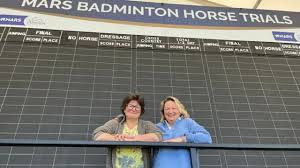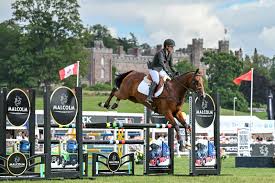Eventing Scores: The Ultimate Guide to Mastering Equestrian Eventing Results
“Eventing Scores”
Eventing Scores: The Ultimate Guide to Mastering Equestrian Eventing Results
If you’ve ever wondered what eventing scores mean in equestrian competitions, you’re not alone. Eventing is often referred to as the “equestrian triathlon” because it combines three disciplines: dressage, cross-country, and show jumping. For horse enthusiasts, riders, and fans alike, understanding eventing scores is essential to appreciating the skill and strategy behind this thrilling sport.
In this guide, we’ll break down what eventing scores are, how they’re calculated, why they matter, and how you can interpret them like a pro. Whether you’re a beginner or a passionate equestrian follower, this article will give you a complete understanding of eventing scoring systems.

What Are Eventing Scores?
Eventing scores are the official results that determine how well a horse and rider perform across the three phases of competition. Unlike other equestrian sports where higher scores mean victory, in eventing, the goal is to have the lowest score possible.
Each phase adds penalty points, and the rider with the fewest total penalties at the end wins. This unique scoring system makes eventing not only competitive but also highly strategic.
The Three Phases of Eventing and Their Scoring
1. Dressage Phase
- Dressage is the opening stage of eventing, showcasing the horse’s discipline, obedience, and harmony with the rider.
- Judges assign marks (from 0 to 10) for each movement in the dressage test.
- These marks are totaled and converted into a percentage score, which is then turned into penalty points.
- The formula:
Penalty Score = (100 – Dressage Percentage) × 1.5 - Lower penalties mean a better performance.
2. Cross-Country Phase
- This is the most thrilling part of eventing, testing speed, stamina, and bravery. Horses and riders tackle a long outdoor course filled with solid obstacles.
- Penalties are added for:
- Refusals or run-outs at fences
- Falls of horse or rider
- Exceeding the optimum time (time penalties)
- The aim is to finish clear (no penalties) and on time.
3. Show Jumping Phase
- The final phase is a test of precision and focus. Riders must guide their horse over a course of colorful fences in an arena.
- Penalties include:
- 4 points for a knocked rail
- Penalties for refusals
- Time penalties if exceeding the time limit
- This phase often decides the winner since it comes last and small mistakes can change the final standings dramatically.
How Are Final Eventing Scores Calculated?
At the end of all three phases, penalty points are added together. The rider with the lowest combined total is declared the winner.
Example:
- Dressage: 28.0 penalties
- Cross-country: 12.0 penalties
- Show jumping: 4.0 penalties
- Final Score = 44.0 penalties
The closer the score is to 0, the more flawless the performance.
Why Eventing Scores Matter
Eventing scores aren’t just numbers on a results sheet; they reflect the horse-rider partnership, training quality, and mental toughness. A single refusal in cross-country or a dropped rail in show jumping can mean the difference between standing on the podium or falling out of the top 10.
For spectators and fans, knowing how to read scores allows you to truly understand the drama of the competition. For riders, analyzing scores provides insight into strengths and weaknesses across the three disciplines.
Tips to Improve Your Eventing Scores
If you’re an aspiring event rider or simply want to understand how professionals excel, here are some expert tips:
- Master the Dressage Basics
- Strong fundamentals in dressage help reduce penalties early.
- Focus on rhythm, straightness, and balance.
- Train for Fitness and Endurance
- Cross-country demands stamina. A fit horse is less likely to make mistakes.
- Practice Technical Jumping
- Work on accuracy, stride control, and course management.
- A single rail down in show jumping can cost valuable placings.
- Time Management
- Cross-country and show jumping often add penalties for going too slow.
- Practice riding to a set rhythm to avoid time faults.
- Mental Focus
- Riders need to stay calm under pressure.
- Visualization and pre-ride routines can help reduce costly errors.
Famous Riders with Outstanding Eventing Scores
Some of the world’s best eventing athletes are renowned for consistently producing low scores. Riders like:
- Michael Jung (Germany) – Olympic gold medalist, known for near-perfect dressage scores.
- Oliver Townend (UK) – World-class rider with multiple international wins.
- Tim Price & Jonelle Price (New Zealand) – Power couple dominating the global eventing scene.
These athletes prove that consistency across all three phases is the secret to outstanding eventing scores.

Common Misconceptions About Eventing Scores
- “Higher is better.”
In eventing, lower scores are always better. - “Cross-country doesn’t matter if you do well in dressage.”
False. Cross-country penalties can wipe out a good dressage performance. - “Time doesn’t affect scores much.”
Incorrect. Time penalties can easily decide the winner in close competitions.
The Future of Eventing Scores
With new technology and digital scoring apps, eventing results are more accessible than ever. Live scoring allows fans worldwide to follow competitions in real time. This transparency makes eventing more exciting, as viewers can see how every jump and every second affects final standings.
In the coming years, we may see advanced analytics that help riders train smarter and minimize penalties. This could raise the competitive standard across the sport.
Conclusion: Mastering Eventing Scores
Eventing scores are more than just numbers – they are a reflection of preparation, precision, and partnership between horse and rider. From dressage elegance to cross-country courage and show jumping accuracy, every phase plays a vital role in shaping the final result.
By understanding how scores are calculated and what influences them, both riders and fans can gain a deeper appreciation of this demanding sport. Whether you’re following the Olympics, local competitions, or training for your first event, mastering the knowledge of eventing scores will make the journey even more rewarding.
✅
